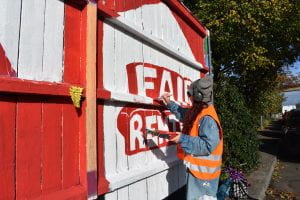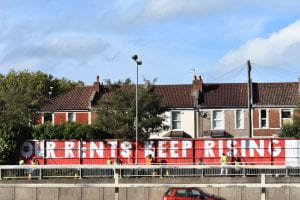Here at Hartygrove, we are kicking off this year’s dig at full force! Despite the torrential rain on Wednesday, spirits are high and some interesting finds are starting to emerge. Our student archaeologists, as well as some volunteers, have been de-weeding and are beginning to dig deeper into the ruins of the Norman hunting lodge. Whilst everyone was hard at work, the social media team decided to interview some of our resident archaeologists to learn more about both them and the site.
Dr Helen Fewlass – Lecturer

What initially got you into archaeology?
I did my undergraduate degree at Bristol in Archaeological and Anthropological Science, which involved collaboration between the Arch and Anth, Chemistry, and Earth Science departments. I was always interested in palaeoanthropology, but learning about the scientific parts of archaeology such as isotopes and artefact dating was also really interesting.
What is your specific area of interest?
I am a radiocarbon and proteomics specialist, which involves working with ancient proteins from bones, pottery, teeth, etc. Different methods are useful for different things, ranging from species identification to radiocarbon dating from collagen. I am involved in research using these methods to learn more about the arrival of Homo Sapiens in Europe, and the overlap they had with Neanderthals.
What is the coolest artefact you’ve ever found?
During my PhD, I got to do research on a Bulgarian cave site. The sequencing and stratigraphy was very cool, dating to the mid to upper palaeolithic and encompassing human remains from both late Neanderthals and the earliest Homo Sapiens ever discovered in Europe. This was obviously a hugely significant discovery which pushed back the date of the arrival of the first Homo Sapiens in Europe by thousands of years.
Funniest story from an archaeological dig?
Modern contamination is a big issue when radiocarbon dating aDNA because it can impact the accuracy of the dating. I had to tell archaeologists to stop licking bones on site because it was contaminating the samples!
What are you looking forward to on this dig?
I mainly work in the lab doing processing and data collection rather than on site digging things up, so it’s nice being in a trench instead. It really makes you remember the effort that goes into the excavation of artefacts.
Any tips for people wanting to get into archaeology?
My main tip is to just get as much experience as possible- either in the lab or on site.
Aaron Girdlestone – MPhil Student and Hartygrove Connoisseur

What initially got you into archaeology?
I grew up watching Time Team and visiting historical sites like castles with my grandparents. Later on I volunteered at Thornbury museum where I met Roger, and from there started digging.
What is your specific area of interest?
I am specifically interested in the Romano-British period, especially the ways in which the different cultures worked together and settled within Britain. I am a pottery specialist and am really interested in the pottery of this site, which we have found a lot of already.
What is the coolest artefact you’ve ever found?
When I was digging in a Roman town in Italy, I found a piece of Roman tile which had holes in it which I recognized as the imprint of a hobnail boot from my reenactments. However, it was unusually small, and we identified it as being a child’s. A Roman tile itself is interesting, but the human impact makes it fascinating to me. I much prefer finds like this to gold or silver!
Funniest story from an archaeological dig?
I was digging in a Roman town near Peterborough where rabbits were burrowing all around. We used this as a reason to check no archaeology was damaged! One day I was standing with my colleague and turned to point at something but when I turned back he had completely disappeared- it turned out he fell straight through a rabbit burrow he was standing over!
What are you looking forward to on this dig?
This year I am really looking forward to answering the questions about the earlier parts of the site and discovering the things that may have been here before the main part of the site. It would be great to identify more of the burnt remains of the original building and identify why and when there was a fire.
Any tips for people wanting to get into archaeology?
Absolutely do what you are passionate about. If you have a passion for archaeology, go for it! I recommend volunteering before you start an archaeology course at university to get experience in the field. It is a great way to apply the theoretical knowledge from university to something you’ve already done.
Nick Fitzgerald – PhD Student
What initially got you into archaeology?
I’ve been into the past for ages and ages which sparked an initial interest. I have a degree in ancient history, but whilst studying it I became more interested in looking at material remains and doing more practical things.
What is your specific area of interest?
My special interest is prehistory, specifically the Neolithic and Bronze Age. I study burnt mounds from fire-cracked rocks occurring in bogs. They don’t sound interesting but are super helpful and interesting as they have the potential to tell us a lot about what is happening in the time period.
What is the coolest artefact you’ve ever found? 
When working at Skomer Island off the coast of Pembrokeshire, I found a flint scraper. There was only one other stone tool found on that island, which pushes the time period for occupation back significantly.
Funniest story from an archaeological dig?
Skomer Island is an active seabird colony, with lots of burrows from puffins and shearwaters. We didn’t get much done that dig – I had to drag my survey partner away from the puffins because she got so invested in them! We’ve also had loads of toads in the walls here at Lower Hazel.
What are you looking forward to on this dig?
This dig is a great opportunity to get outside and do fieldwork. Lots of archaeology doesn’t happen outside. I do a lot of work with GIS and also in the lab analysing pottery residue, so it is nice to be out and about digging again.
Any tips for people wanting to get into archaeology?
Everything is relevant. I used to work in a brewery, and the basic chemistry used there is relevant in archaeological lab work!
So whilst we here at Hartygrove continue praying for sunnier weather next week, we hope you find inspiration in these stories and advice from our experts!
Love Hannah, Ysi and Priya



















